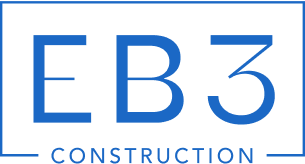Texas property owners face increasing scrutiny over accessibility compliance, particularly when ADA lawsuits reached record highs in recent years. An ADA compliance retrofit contractor in Texas specializes in modifying existing buildings and sites to meet both federal ADA requirements and state-specific Texas Accessibility Standards (TAS).
We handle comprehensive retrofit scopes that span site improvements, building modifications, and residential adaptations. These projects require coordination with Registered Accessibility Specialists, plan reviewers, and Texas Department of Licensing and Regulation inspectors to ensure compliant outcomes.
How Do ADA, TAS, And TDLR Shape Retrofit Requirements In Texas?

The Texas Accessibility Standards (TAS) functions as construction law, while the Americans with Disabilities Act represents civil rights legislation. TAS mirrors ADA scoping and technical requirements with only slight differences. Where ADA provides federal guidelines, TAS adds state-specific administrative rules and oversight mechanisms that affect project execution.
Both frameworks share similar accessibility requirements for elements like entrances, parking facilities, and interior spaces. However, Texas enhances compliance through its unique administrative structure. The Texas Department of Licensing and Regulation (TDLR) oversees the Architectural Barriers Program and maintains authority over projects exceeding $50,000 in construction value.
Professional Roles And Due Diligence
ADA consultants and Registered Accessibility Specialists provide critical due diligence services throughout retrofit projects. We coordinate with RAS professionals for plan review services that verify compliance before construction begins. These specialists bring expertise in both ADA requirements and Texas-specific administrative rules.
Site inspections complement plan reviews by verifying field conditions against approved drawings. RAS professionals conduct these inspections to identify existing barriers and confirm retrofit scopes align with accessibility standards. This dual approach of plan review and site inspection helps ensure comprehensive compliance.
Critical Timeline Requirements
TDLR requires post-construction inspection within one year of substantial completion. This mandatory inspection verifies that completed work matches approved plans and meets accessibility requirements. We schedule these inspections promptly after project completion to avoid potential delays or complications.
The one-year window provides adequate time for construction completion and final coordination. However, early scheduling prevents issues that may arise from contractor demobilization or final payment releases. This timing requirement applies to all projects subject to Texas Architectural Barriers Act oversight.
Enforcement And Risk Mitigation
ADA Title III enforcement includes both regulatory oversight and private party litigation. Drive-by lawsuits target facilities with accessibility violations, creating potential liability for property owners. These cases often focus on readily identifiable issues like parking compliance or entrance accessibility.
Timely plan reviews and post-construction inspections help reduce enforcement risk by documenting compliance efforts. Professional verification through RAS services provides documented evidence of due diligence. This documentation becomes valuable if accessibility compliance questions arise later.
What Scopes Are Common In ADA Retrofit Projects Across Texas?
ADA retrofit projects in Texas span multiple categories, each addressing specific accessibility barriers through targeted construction solutions. We organize these scopes by location to ensure comprehensive site assessment coverage and efficient project coordination.
Exterior And Site Access Modifications
Walkways receive substantial attention in ADA retrofits, requiring proper width clearances and surface conditions that accommodate wheelchair users and mobility aids. We address surface irregularities, cross-slopes, and changes in level that create barriers along pedestrian routes.
Accessible parking modifications include proper space dimensions, access aisles, and signage placement. The path of travel from designated parking to each accessible entrance must meet specific grade requirements and surface standards. This path often requires the most extensive coordination between site grading and architectural elements.
Parking lot retrofits frequently involve restriping to achieve compliant dimensions and adding van-accessible spaces where required. Site drainage considerations become critical when modifying grades to achieve proper accessibility slopes.
Ramp And Entry Modifications
ADA ramps address grade changes that prevent accessible entry to buildings. We calculate proper run lengths, landing dimensions, and handrail specifications based on the total rise required. Retrofit ramps often require creative solutions when existing site constraints limit available space.
Entrance modifications include door hardware updates, threshold adjustments, and maneuvering clearance improvements. Automatic door openers frequently become necessary when existing door operation forces exceed ADA limits or when approach clearances cannot accommodate standard manual operation.
New entrance construction sometimes becomes necessary when existing entries cannot be economically retrofitted to meet current standards. These projects require coordination between structural modifications and mechanical systems.
Building Interior Circulation Routes
Lobbies and common areas require clear floor space modifications, often involving furniture relocation or permanent fixture adjustments. Door widening projects address circulation bottlenecks where existing openings fall below the required clear width.
Vertical access improvements include elevator upgrades, stair modifications, and interior ramp installations where grade changes occur within buildings. We evaluate existing circulation routes against current accessibility standards and identify the most cost-effective upgrade approaches.
Restroom retrofits represent some of the most technically complex interior modifications. These projects typically require plumbing relocations, fixture replacements, and space reconfigurations to achieve proper clearances and approach angles.
Residential Accessibility Solutions
Bathroom modifications form the core of residential ADA work. Roll-in showers eliminate barriers created by standard tub-shower combinations, while step-in showers provide easier access than traditional bathtubs. Walk-in tubs offer an alternative for users who prefer bathing over showering.
Fixture updates include pedestal sinks that provide wheelchair clearance underneath, ADA commodes with proper height specifications, and grab bar installations at strategic locations. These modifications often require plumbing and electrical coordination to ensure proper support and functionality.
Door widening projects remove circulation barriers throughout residential spaces. Flooring updates address level changes and surface conditions that impede mobility device operation. Lift systems and track systems provide vertical and horizontal movement assistance where architectural modifications alone cannot address accessibility needs.
Exterior home solutions include ramp installations for entry access and automatic door opener installations for users with limited upper body strength. These exterior modifications require weatherproofing considerations and proper drainage design to ensure long-term functionality.
What Is A Practical Workflow From Assessment Through Inspection?

We execute ADA compliance retrofits through a structured sequence that minimizes delays and ensures regulatory adherence. This workflow coordinates multiple stakeholders while maintaining clear documentation at each phase.
Pre-Planning And Site Assessment
We begin every project with comprehensive site and building assessments that examine walkways, parking areas, building entries, public spaces, restrooms, and circulation routes. Our teams document existing conditions with photographic evidence and specific code references to establish baseline compliance status. These assessment reports serve as the foundation for all subsequent design and construction decisions.
The assessment phase identifies priority areas requiring immediate attention versus elements that can be addressed in future phases. We coordinate with Texas Department of Licensing and Regulation guidelines to ensure our documentation meets state requirements for project justification and scope definition.
Plan Review And Documentation
Before construction begins, we submit drawings to Registered Accessibility Specialists for ADA/TAS plan review. This step verifies that proposed modifications meet both federal and state accessibility standards. The Architect of Record coordinates with our teams to address any review comments before construction mobilization.
Critical TDLR/TAS documentation includes Project Registration through the Texas Architectural Barriers System, which generates the required TABS number for permitting. We prepare and submit the Proof of Submission form within twenty days of plan completion, ensuring compliance with state administrative requirements. The Owner Agent Designation form clarifies authorization when property owners designate representatives for project coordination.
Construction Execution And Quality Control
We execute retrofits according to reviewed plans while maintaining ongoing communication with the assigned RAS for any field clarifications. Our construction teams document progress with photographic records that demonstrate compliance with approved specifications.
Quality control checks occur at key milestones to verify that completed work aligns with TAS requirements before proceeding to subsequent phases. This approach prevents costly rework and ensures that final inspections proceed smoothly.
Post-Construction Inspection Scheduling
Upon substantial completion, we coordinate the mandatory TDLR inspection using the Request for Inspection form. This inspection must occur within one year of construction completion to maintain regulatory compliance. We schedule these inspections strategically to allow time for any corrective work before the one-year deadline expires.
The inspection process includes verification that all construction matches the approved plans and meets current TAS standards. Our teams remain available during this period to address any items identified during the RAS inspection and complete necessary corrections within the prescribed timeframes.
Training And Ongoing Education
We participate in accredited accessibility training sessions to maintain current knowledge of evolving standards and enforcement practices. These educational opportunities help our teams stay informed about technical updates and regulatory changes that affect retrofit projects.
The TAS Project Timeline Checklist serves as an ongoing reference document throughout the project lifecycle, ensuring that we meet all administrative deadlines and maintain proper documentation for regulatory compliance.
How Should Owners Handle Legacy Conditions, Safe Harbor, And Phased Upgrades?
The ADA safe harbor provision protects property owners from costly retrofit requirements for elements that already complied with the 1991 ADA Standards. This means features like light switches installed at 54 inches maximum height remain compliant, even though the 2010 ADA lowered the requirement to 48 inches. Safe harbor applies on an element-by-element basis, allowing legacy conditions to persist until modifications occur.
When we encounter violations during assessments, any remediation work must meet current 2010 ADA standards. Property owners cannot use the 1991 standards for corrections made today. This creates a practical challenge where fixing one non-compliant element may trigger upgrades to adjacent features that interconnect with the repair scope.
Managing Phased Compliance Across Facility Portfolios
Transition plans provide a systematic approach for large property portfolios facing extensive accessibility upgrades. We develop phased compliance schedules that prioritize high-traffic areas and critical access routes first. This approach spreads capital expenditures across multiple budget cycles while addressing the most impactful barriers early.
Property owners benefit from documenting existing conditions thoroughly before establishing upgrade timelines. We photograph and catalog legacy conditions that qualify for safe harbor protection, creating a baseline for future renovation decisions. This documentation proves valuable during inspections and helps justify why certain elements remain unchanged.
Historic Renovations And Character Preservation
Historic properties require tailored approaches that balance accessibility improvements with character preservation requirements. We work with preservation specialists to identify solutions that meet accessibility goals without compromising architectural integrity. Alternative compliance paths may include equivalent facilitation where standard solutions prove incompatible with historic features.
Phased upgrades in historic buildings often focus on primary routes and public spaces first, allowing secondary improvements to follow as preservation planning evolves. We coordinate with preservation authorities early to establish acceptable modification parameters and avoid conflicts between accessibility and historic preservation requirements.
Conclusion And Next Steps

Texas ADA compliance retrofit work requires a systematic approach that aligns federal ADA requirements with Texas Accessibility Standards. We begin each project with comprehensive assessments and plan review, document findings with photos and code references, then execute construction scopes including ramps, path-of-travel improvements, restroom retrofits, and residential modifications. The critical final step involves scheduling the required TDLR inspection within one year of completion to achieve project closeout.
Successful ADA retrofit projects rely on proper documentation through available forms, strategic planning through transition plans for larger portfolios, and ongoing team education through accessibility training programs. We coordinate closely with Registered Accessibility Specialists and ADA consultants throughout the process, ensuring each retrofit moves efficiently from initial assessment reports through plan review to final compliance verification. This structured workflow minimizes project delays while delivering accessible environments that meet both regulatory requirements and user needs.
Ready to start your ADA compliance retrofit project? Contact EB3 Construction to coordinate your assessment and plan review process with experienced RAS professionals.




